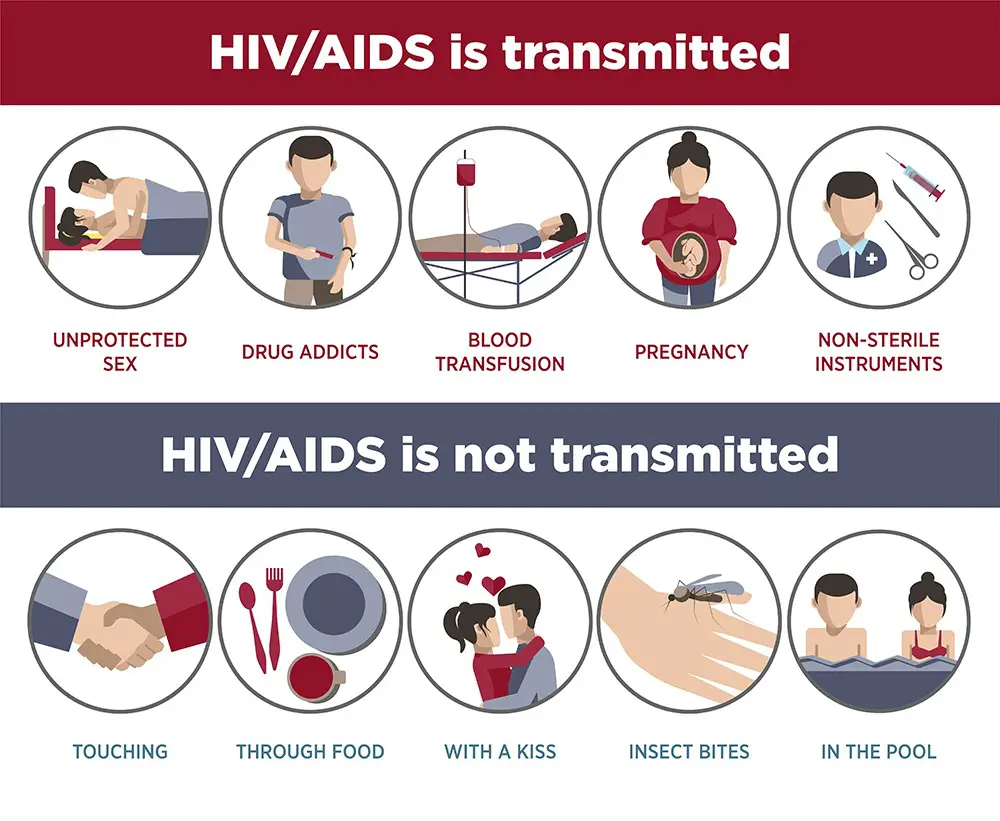
Causes and Transmission
HIV (Human Immunodeficiency Virus) targets the immune system, specifically CD4+ T cells, weakening the body’s ability to fight infections and diseases. As the virus progresses, it can lead to AIDS (Acquired Immunodeficiency Syndrome), which is marked by increased vulnerability to opportunistic infections and certain cancers (HIV.gov, 2024).
HIV is transmitted through the exchange of specific bodily fluids—blood, semen, vaginal fluids, rectal fluids, and breast milk. Common modes of transmission include:
- Unprotected sexual contact
- Sharing of needles or injection equipment
- Receiving contaminated blood products
- Mother-to-child transmission during pregnancy, childbirth, or breastfeeding (CDC, UNAIDS, WHO, 2024)
It’s important to note that HIV cannot be spread through casual contact such as hugging, handshakes, or sharing food. The virus is also not transmitted through air or water (WHO, 2024).